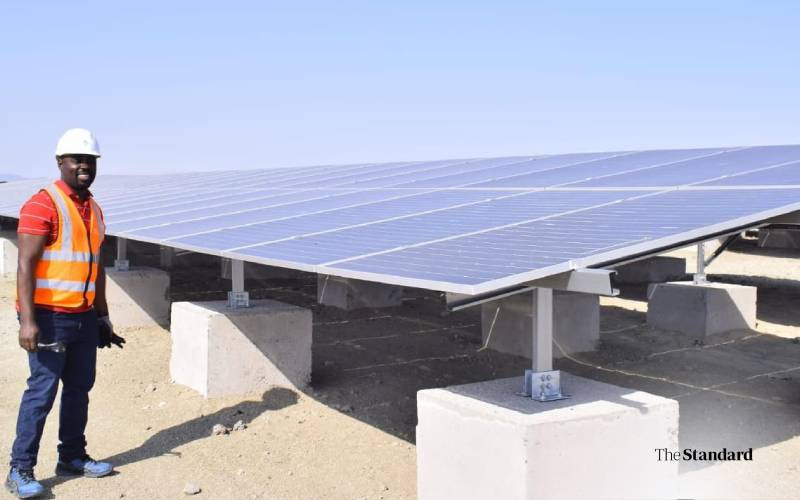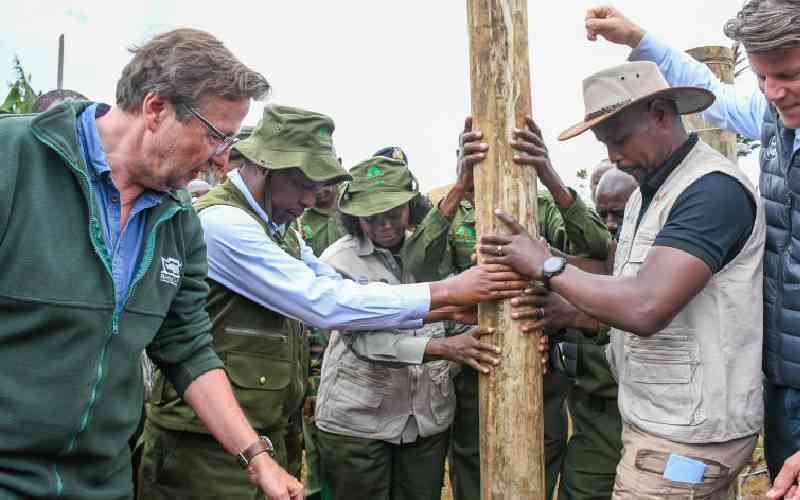
Animals at the bed of a drying river near Magadi in Kajiado County. December 6, 2022. [File, Standard]
Eight years ago, the Kenyan government issued a directive halting the drilling of new water boreholes in Nairobi, Kiambu, and Machakos counties.
This decision aimed to limit the proliferation of boreholes in these areas and to focus on sourcing water from outside these counties. The move was prompted by the increasing demand for water in urban and rural areas, where consumption was surpassing supply due to rapid population growth.
However, the situation has been exacerbated by climate change and inadequate infrastructure planning, which are expected to further strain water resources. Experts predict a significant decrease in groundwater recharge over the next two decades, potentially worsening the water scarcity issue. Among urban centres, only Kisumu relies on its local basin for water; other major towns depend on basins located outside their regions.
The Water Resources Management Authority (WRMA) oversees six major water catchment areas: Lake Victoria North, Lake Victoria South, Rift Valley, Athi, Tana, and Ewaso Ng’iro North. According to water engineer Judah Ochieng’ Abekah, the government must intensify efforts to restore, conserve, and rehabilitate these catchment areas to ensure a sustainable water supply for all households in Kenya. Abekah, a former director of Vision 2030 and former County Executive Committee (CEC) member for Nairobi City County, notes that only the Lake Victoria and Tana basins currently have adequate water resources; the other basins are facing deficits.




“There are 18 gazetted water towers in the country; however, only five—Mau, Aberdare, Mt Kenya, Cherang’ani, and Mt Elgon—play a critical role in water catchment and supply,” says Engineer Abekah. “These are the hearts of Kenya and make water available, which is why the government is investing heavily in conserving and preserving them,” he adds.
With an average population growth rate of three per cent annually, Kenya’s population is projected to reach 68 million by 2030. This growth, coupled with climate change challenges, will intensify the scarcity of water resources. “Kenya is an agricultural economy and aspires to be an industrial economy by 2030. An industrial economy with a larger population means the demand for water supply will increase,” warns Engineer Collins Nyang’wara Oneko, a technocrat with experience from international organisations.
Oneko advises the government to ensure a constant water supply not only in urban centres, but also in rural areas, where the majority of Kenyans engage in subsistence farming. This approach will contribute to other development aspects and ensure food security.
International non-governmental organisations (NGOs), such as UN Environment (UNEP), have embarked on initiatives to clean up Lake Victoria by removing plastic and debris dumped into the lake. These organisations are collaborating with the Kenyan government through various ministries and stakeholders to achieve this mission. The cleanup efforts, which began in 2018, also address issues such as water and forest conservation, environmental protection, and climate change adaptation and mitigation.
As global temperatures rise due to climate change, the water situation continues to worsen, affecting 40 per cent of the world’s population. In Kenya, two-thirds of the population lacks access to clean and sufficient water, according to Engineer Abekah. Each person in Kenya requires 50 litres of clean water daily for drinking, cooking, and cleaning. However, many do not have even 20 litres per day. Participants at a recent workshop in Nairobi were informed that four out of ten people lack access to clean and treated water, while six out of ten use unapproved sanitation solutions, a significant challenge for a population of 54 million.
These challenges are most prevalent in rural areas and urban slum regions, notes a source from the Ministry of Water, who requested anonymity due to restrictions on speaking to the press. “You should not ask the government to supply you with water when Lake Victoria is in your front yard or backyard,” challenged Engineer Oneko, addressing residents of Nyanza who live along the shores of Lake Victoria.
Addressing Kenya’s water scarcity requires a multifaceted approach, including the restoration and conservation of water catchment areas, investment in infrastructure, and community engagement.